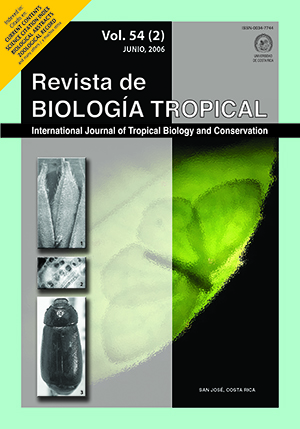Abstract
I studied the relationship between sex and infestation with ectoparasites in the water rat Scapteromys aquaticus from La Plata river marshland, Argentina. The Relative Density’s Index (RDI) for males was 3.90% (females 3.60%). A total of 2653 ectoparasites were collected on 33 male hosts, and 1945 on 31 females. Ectoparasite specific richness (S) and diversity (H) were S = 14, H = 1.17 on males, and S = 10, H = 1.52 on females. The similarity between male and female rodents according to their ectoparasites was 75.00%. Although no ectoparasite species showed significant mean abundance (MA) differences between host sexes (p<0.05), and only Laelaps manguinhosi prevalence was significantly higher on male hosts (N= 2.01, p<0.05) in this study, there are reasons to think that the sex of the water rat affects ectoparasite burden and specific richness. This information has epidemiological potential because the closely relatedScapteromys tumidus is involved in the transmission of Rickettsia coronii, which causes Marsella fever in humans.
##plugins.facebook.comentarios##

This work is licensed under a Creative Commons Attribution 4.0 International License.
Copyright (c) 2006 Revista de Biología Tropical






